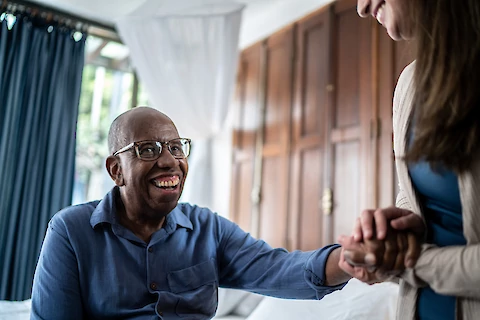
What are Activities for Daily Living (ADLs) for Seniors? - A Complete Guide
Living a good life is instrumental for older people. Just like young people wake up in the morning and perform various activities, seniors also have a life to live. In this case, it is imperative to understand how to help seniors live a normal life. Here is a guide to the activities of daily living or ADLs that will help seniors live an active and comfortable life.
What are Activities of Daily Living (ADLs)?
Activities of Daily Living are basic duties that are instrumental to one's daily living. This is a term used by health care professionals to determine the best care for senior adults. It is a streamlined process with clear plans that care providers use to help seniors become independent and care for themselves without help from anyone.
What are the Instrumental Activities of Daily Living For Seniors?
As people age, what they used to accomplish actively becomes more challenging, mostly because of old age and health issues. This also affects their ability to accomplish daily tasks.
Seniors can engage in instrumental activities for daily living (IADL) to live independently and more comfortably. Here are several types of instrumental activities for seniors.
- Personal hygiene- Taking care of the oral skin, showering, brushing teeth, as well as shaving hair.
- Dressing- Be able to dress well by selecting the proper attire and putting it on. Should also be able to undress, manage zippers, buttons, and fasteners.
- Toileting- A senior should be able to locate the toilet and clean themselves after toileting.
- Eating- The senior should be able to feed alone by putting food in the mouth, chewing, and swallowing.
- Continence- Have complete control over bowel movements and the bladder.
- Functional mobility- The senior should be able to get out of bed, walk around from one place to another and get back to the chair alone.
How Do Health Care Professionals Access ADLs and IADLs?
A caregiver provides valuable information to the doctor to enable the practitioner to determine the senior's functional status.
In cases where a caregiver gives inaccurate information, the doctor may underestimate or overestimate the seniors' status. This can lead to inaccurate assessment.
It is also best that the senior gives a self-report because they understand their bodies and lives more than anybody else. However, the assessment will be based on the senior's interpretation.
Remember, it is crucial to provide accurate details to create an accurate care plan. If the doctor doesn't understand the nitty-gritty, they may create an ineffective report that may not help your loved one.
For instance, if your loved one has diabetes and is forgetful, they may not remember to take care of their blood sugar levels effectively. The doctor needs to know about this and advise you on how to manage the condition well.
Understanding such conditions can help the doctor create an effective plan that will work for your loved one.
Getting Help for Your Loved One With ADLs
Thinking of helping your loved one perform daily tasks alone, but you do not know where to begin? Look for healthcare professionals to discuss the issues with the seniors. It is best to understand the senior's needs and devise creative ways to live independently and comfortably.
If you're looking for a senior living community in Charlotte, contact Senior Helpers for all your needs and expectations.